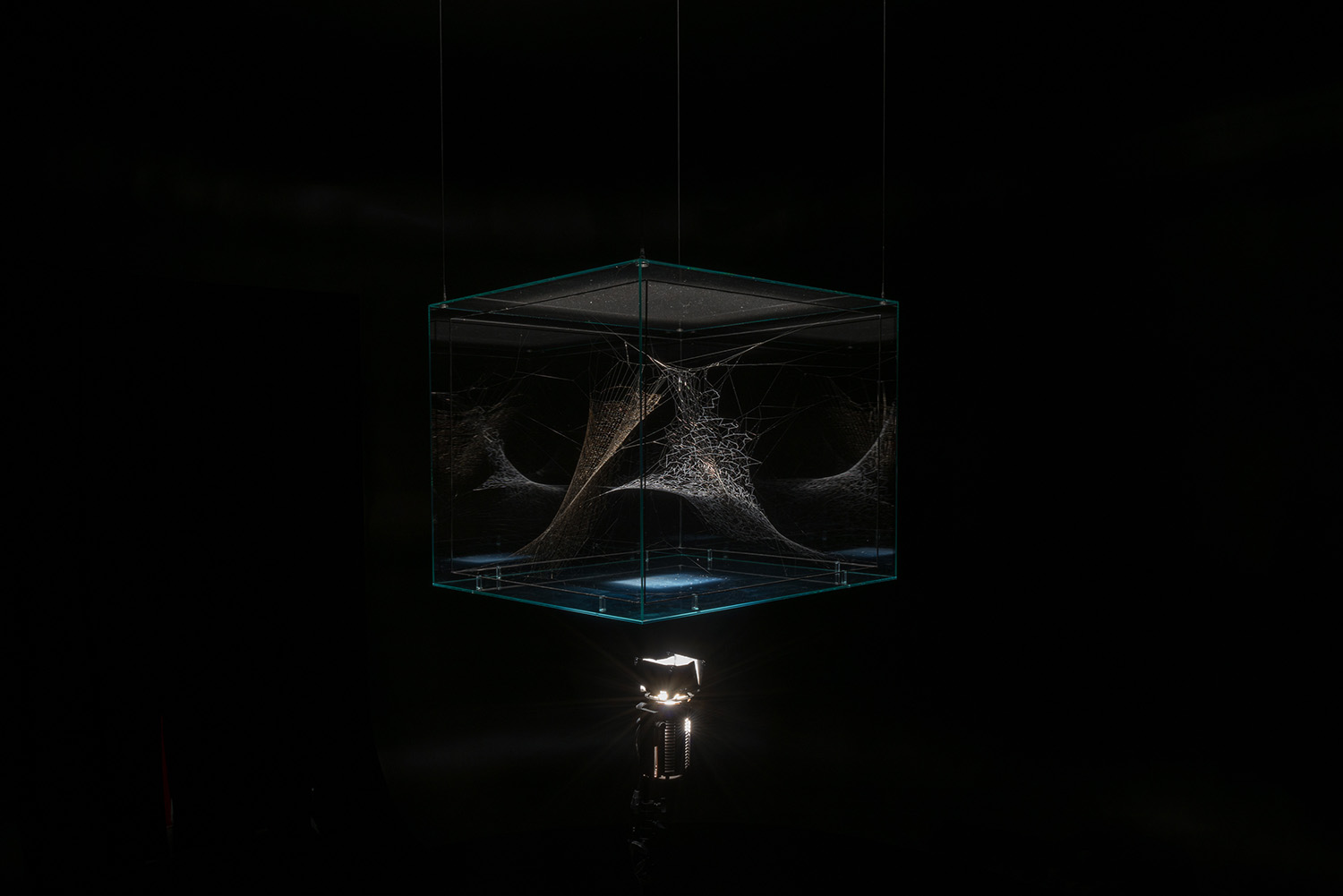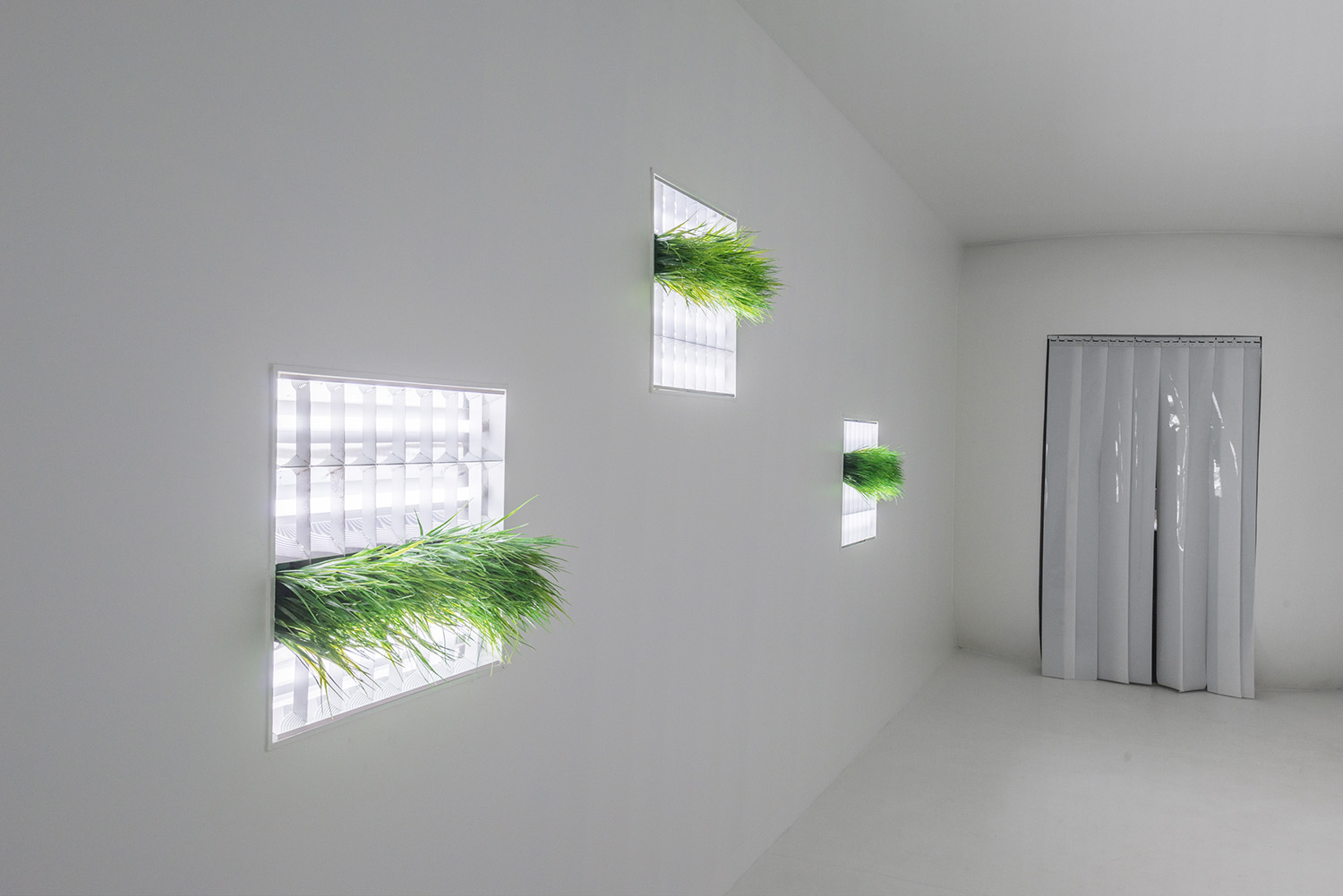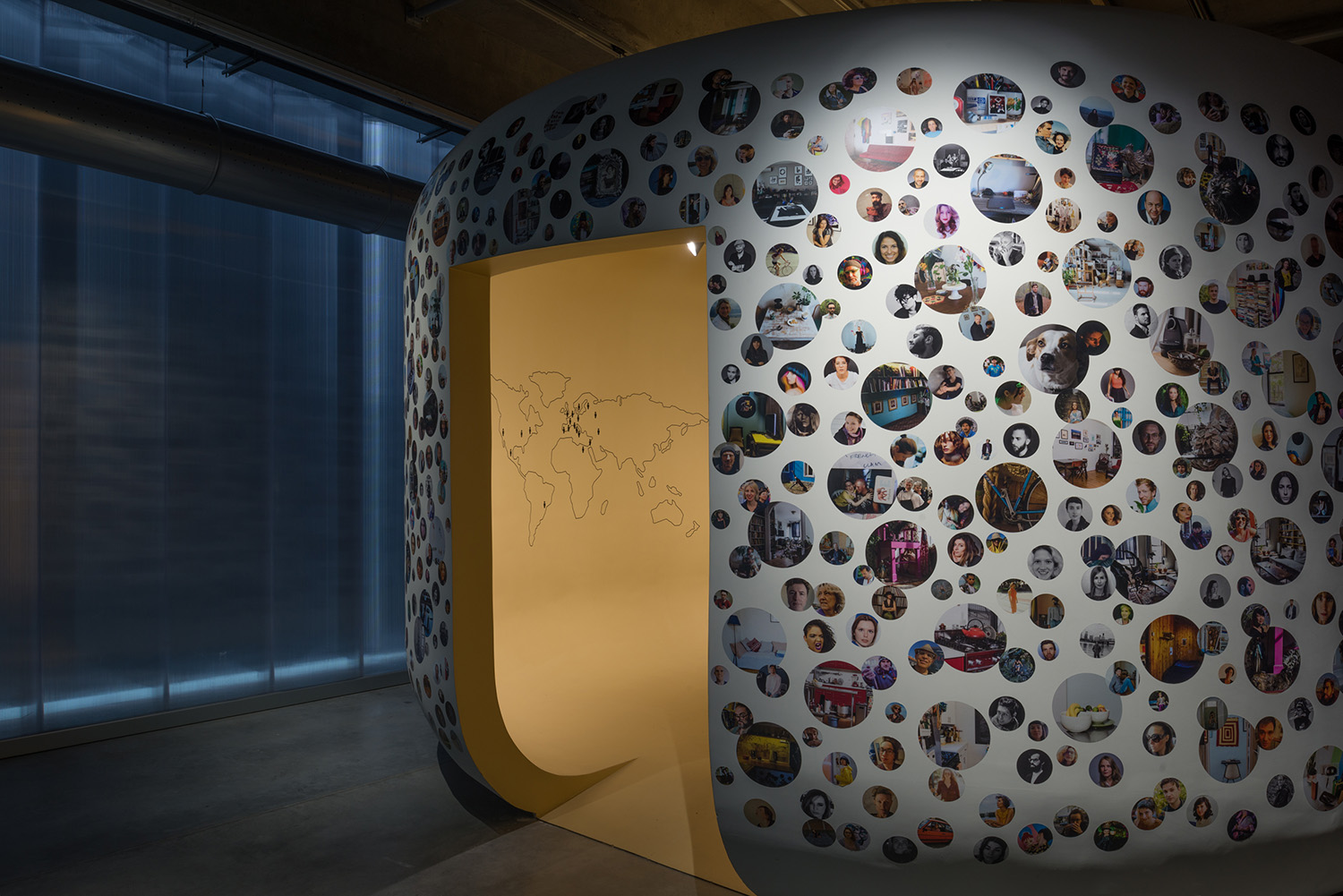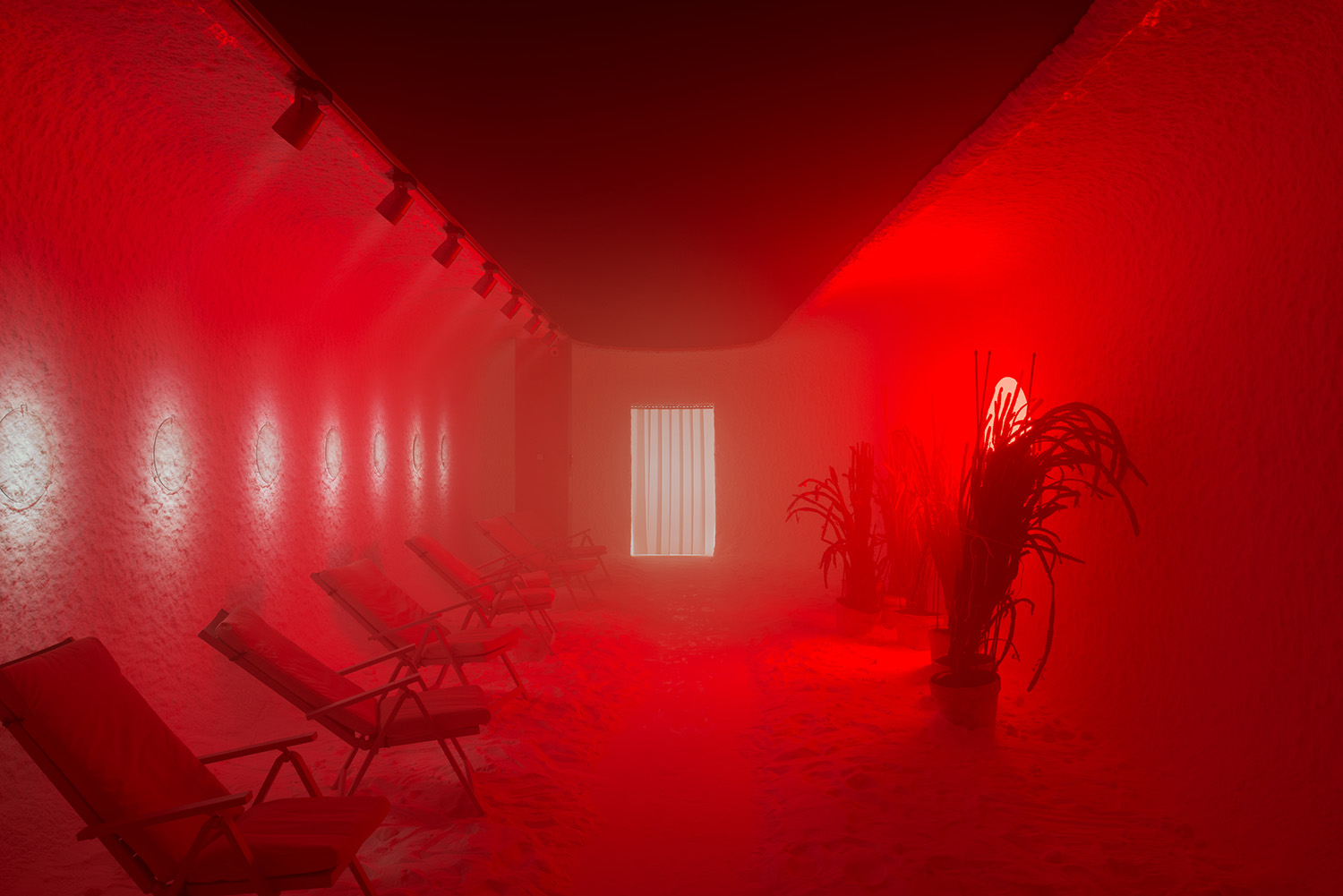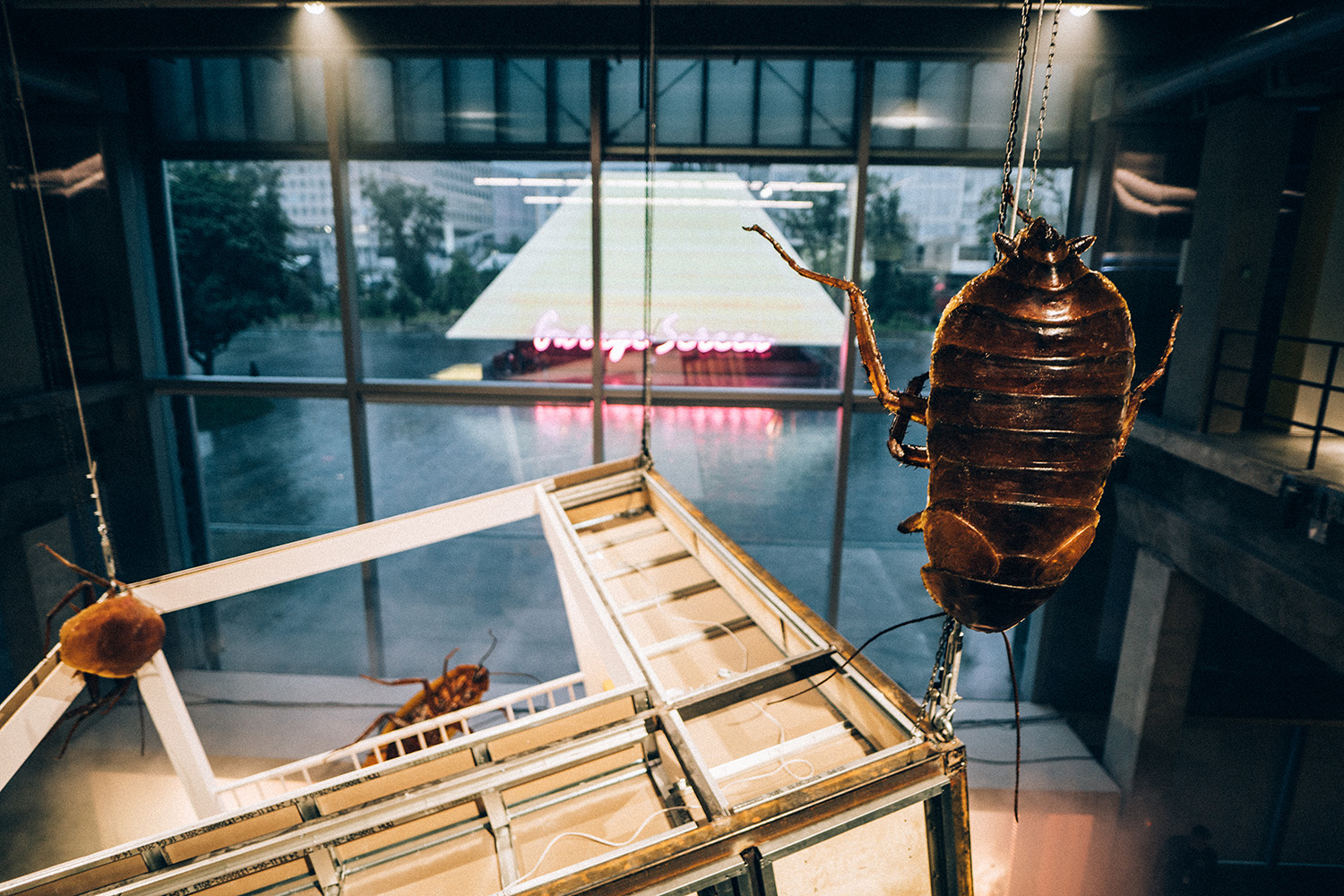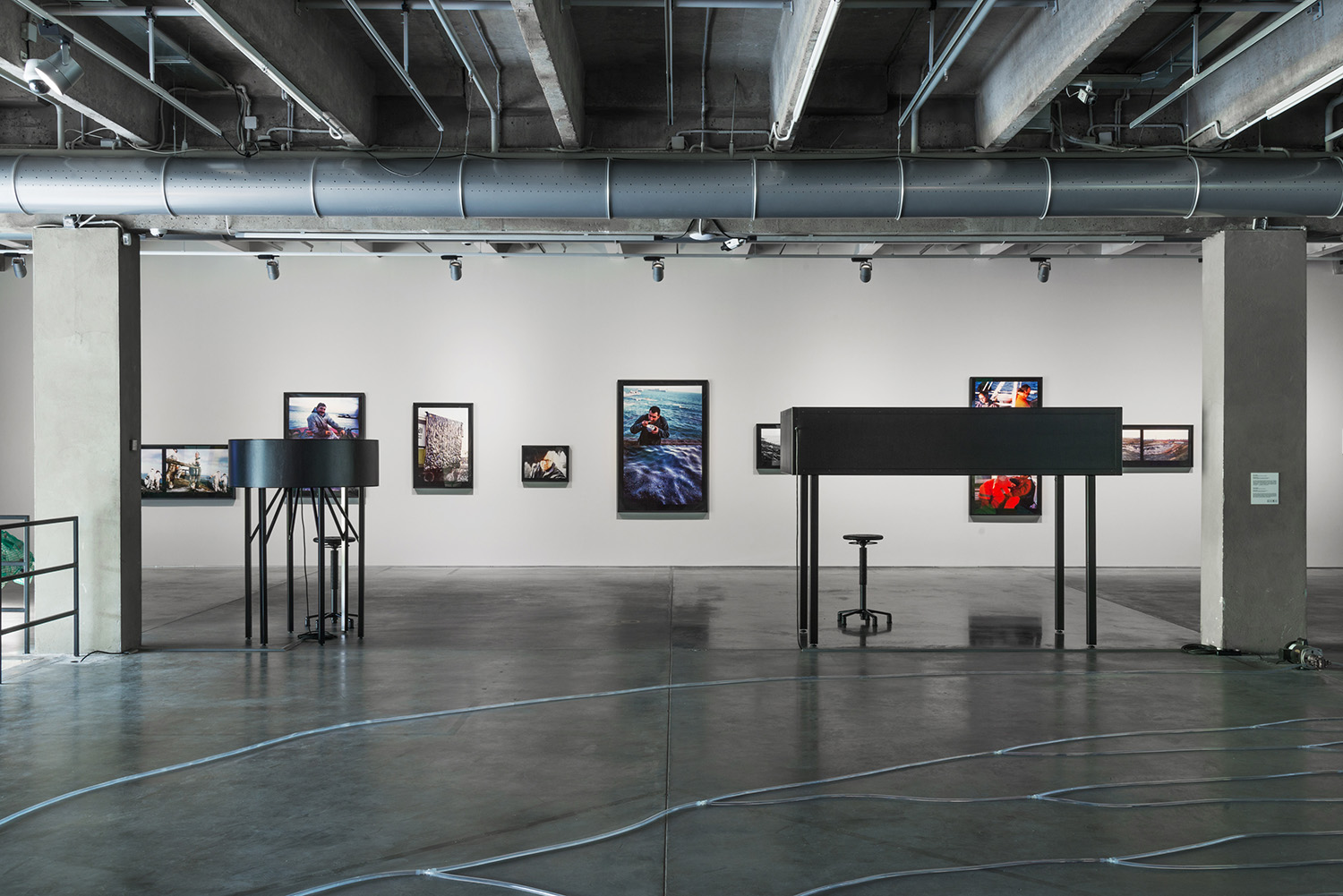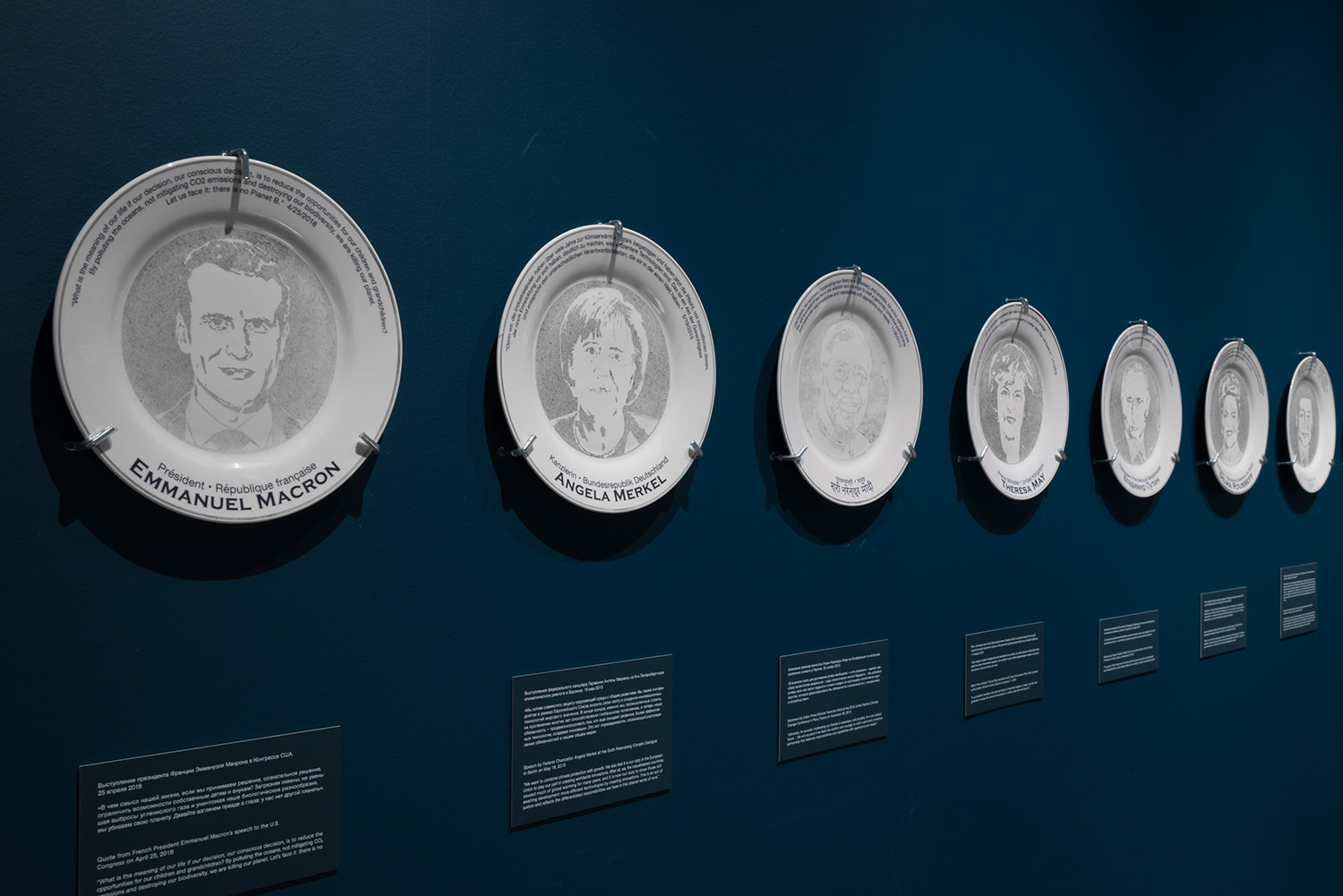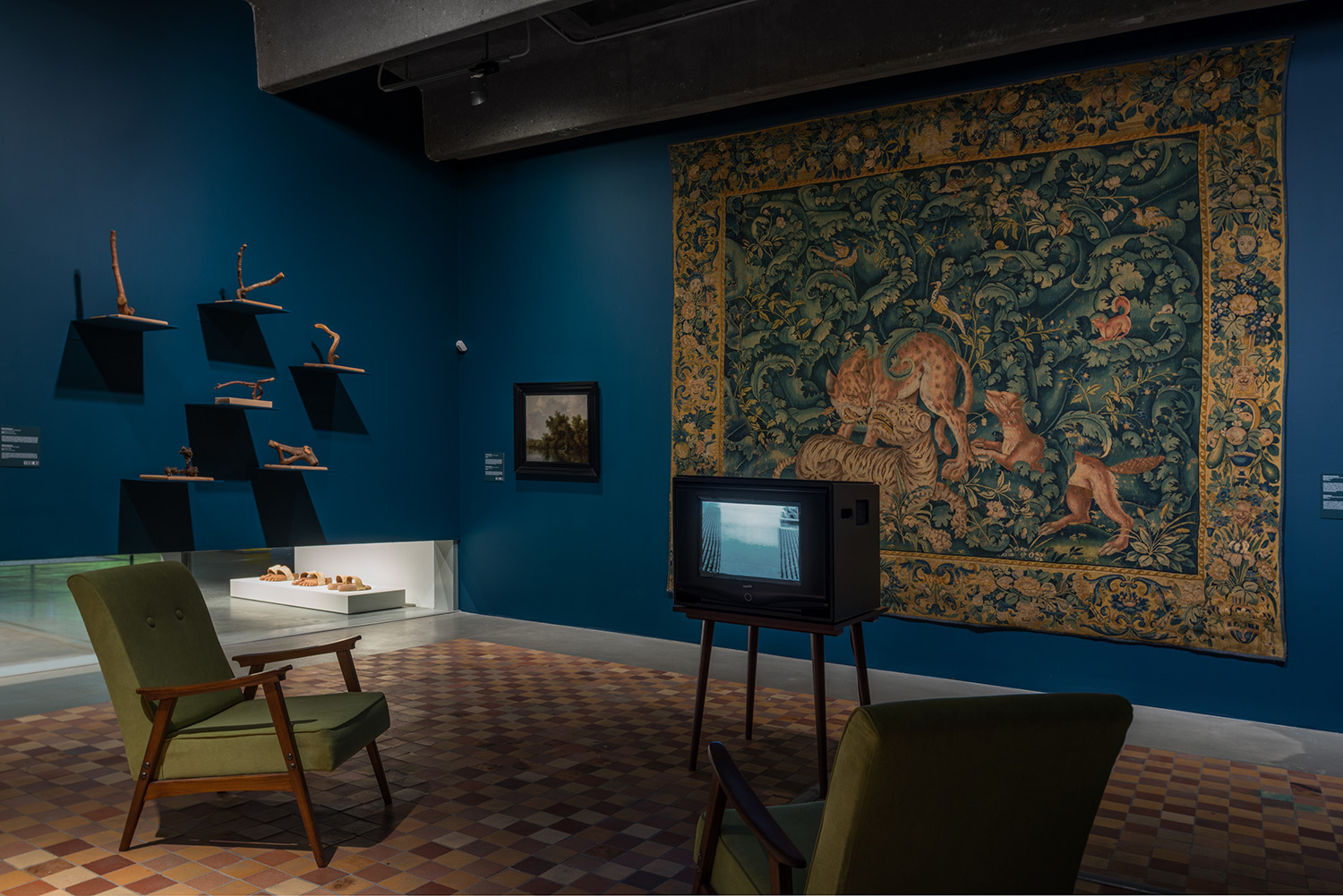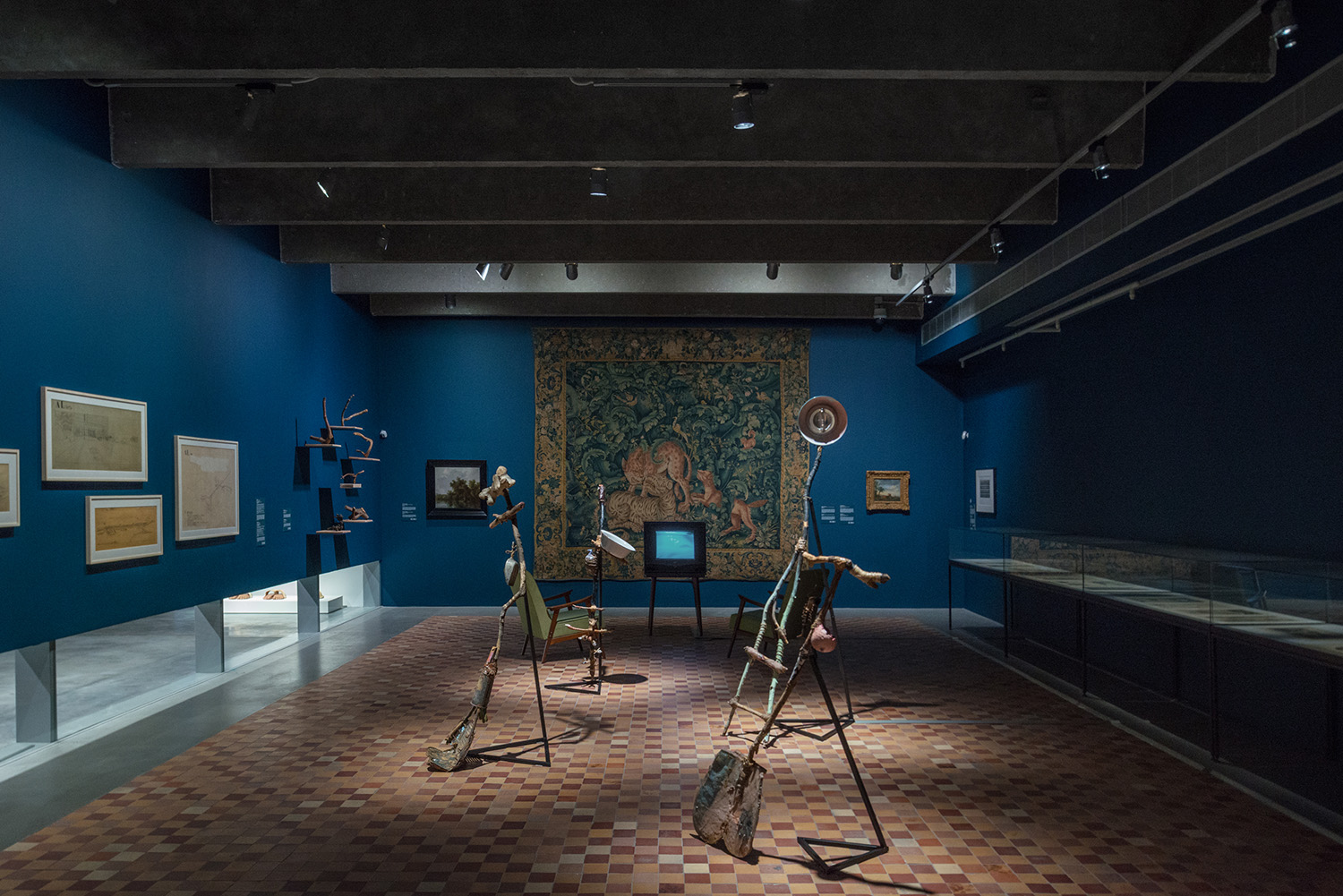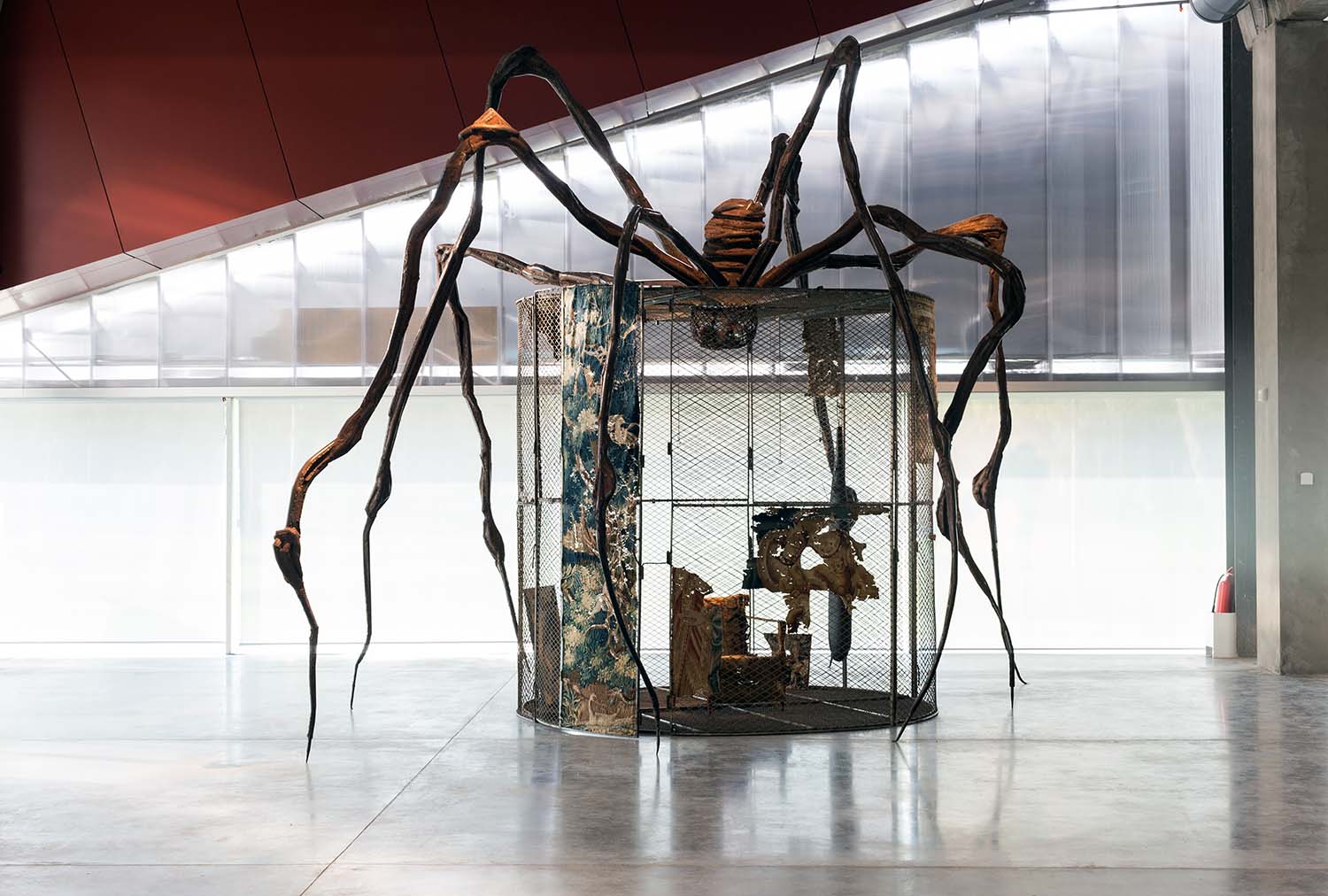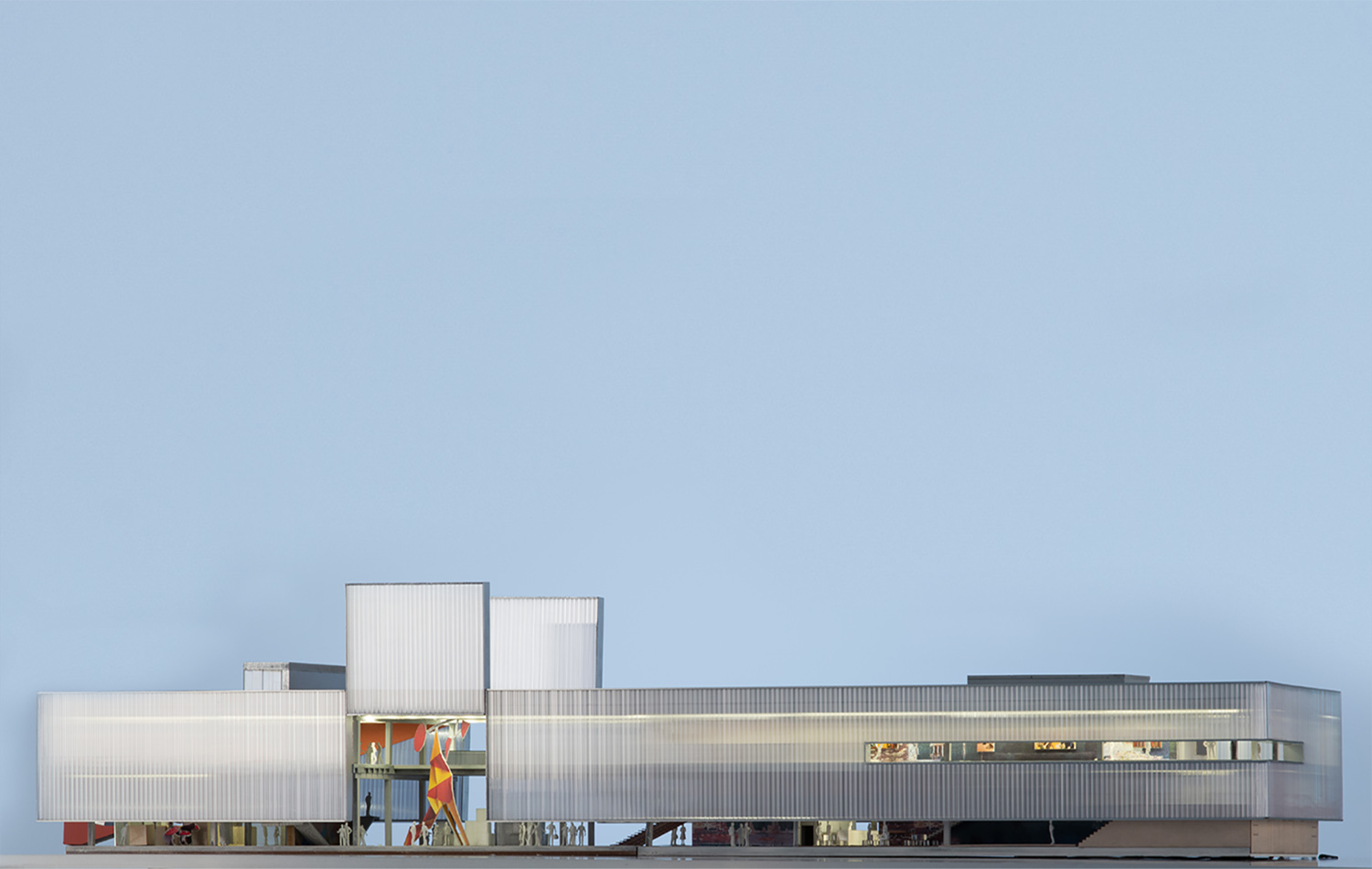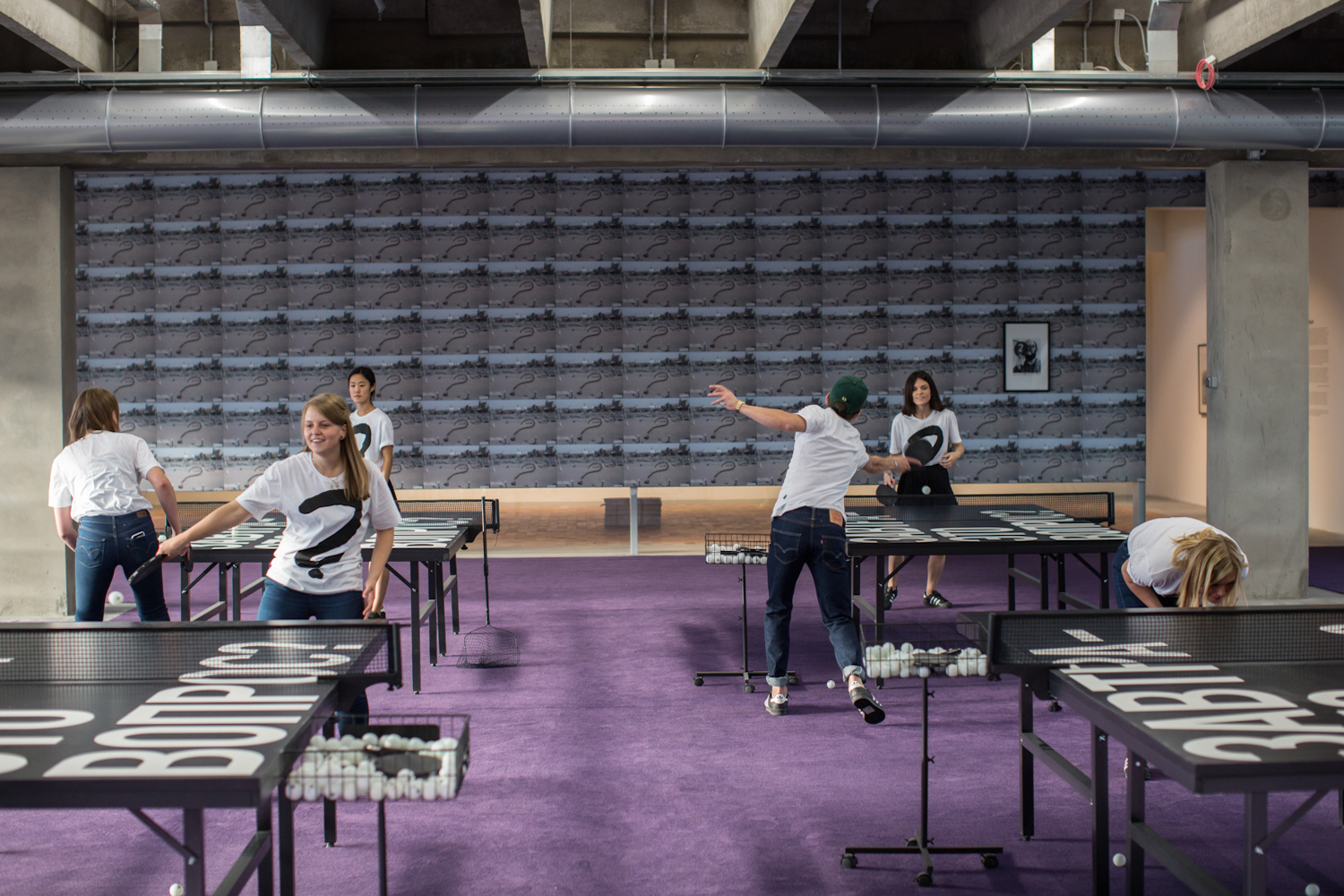Is it the elephant in the room or a non-issue that the Garage Museum is funded by fossil-fuel, given that co-founders Dasha Zhukova and Roman Abramovich made their fortune in the petroleum industry? This question lingers in my mind as I head to Gorky Park. Since opening its doors more than eleven years ago and subsequently moving to a high-profile building in 2015, the venue has established the highest production values and built the largest audience for contemporary art in Moscow.
Now, for the first time in its history, the whole expanse of the museum building has been dedicated to a single project. The result is a sprawling exhibition — on a scale that would put smaller biennials to shame — that includes large-scale works and several new commissions by fifty international and local artists, among them Maurizio Cattelan, Tomás Saraceno, Martha Rosler, and the late Huang Yong Ping, to name but a few. The overall result is brash, spectacular, and intense.
One of the show’s defining works is Doug Aitken’s The Garden (2019), a kind of inverted greenhouse where lush exotic plants surround a little house made of bulletproof glass, furnished like a generic living room. Any viewer can sign up for a chance to put on a white protective overall, enter the space with a white baseball bat, and smash everything to smithereens. This apparently cathartic experience for the performer meanwhile suggests a poignant metaphor, transposing the self-inflicted harm of climate change onto a domestic scale. John Akomfrah’s monumental six-channel video installation Purple (2017) is similarly impressive, using overwhelming visuals — including tropes from Alaska to Tahiti — to orchestrate a panoramic reflection on the magnitude of human influence on the world. Then there’s Hayden Fowler’s Together Again (2019), a virtual-reality installation and performance piece featuring the artist and Yuuki, a professionally trained wolf in a real cell and a virtual environment. The work does produce striking imagery, but feels like a heavy-handed attempt to modernize Joseph Beuys’s 1974 performance I Like America and America Likes Me.
Instead of preaching or exalting art activism, the strategy of curators Ekaterina Lazareva and Snejana Krasteva is clearly to reach their audience through confrontation. These provocative works are intended to spark public discussion, engaging the audience both emotionally and intellectually.
In their press statement the curators paraphrase the author of Art After Nature, British art historian T. J. Demos, and point to individual lifestyle choices: “The more we think of ‘nature’ as independent from us, the more we distance ourselves from the changing world. Humans are a part of the ecosystem, meaning our everyday activities shape our future.”
A few works in the show focus on the effects of seemingly banal choices. Laure Provost shows a blue sweater apparently dripping wet, though in reality stiff with epoxy resin. Titled The day global warming turned my jumper like this (2019), its everyday appearance suggests the idea of climate change as a bitter one-liner, yet one that brings up nagging afterthoughts: Is it the cold sweat of flat-out panic or that of rising temperatures? Or does it stand for the effort necessary to avoid impending disaster?
In Smog Pickers (2019) by American artist Kim Abeles, portraits of world leaders, flanked by texts from flowery political speeches with vague ecological promises, smile confidently from a series of porcelain plates. The artist created the portraits in an unconventional way: she placed stencils on blank plates that she then exposed to the elements in Moscow and Gorky Park. Over the course of a few weeks the local smog settled onto the plates, rendering the politicians’ faces and statements visible, as well as making tangible their failure to reduce pollution.
Her work is a good example of the curators having invited many artists to produce new projects in Moscow, in an effort to reduce the exhibition’s carbon footprint. Similarly, rather than a printed catalogue, an exhibition guide exists online only; materials were sourced locally, and temporary walls from previous exhibitions were reused. And there is a plan to offset the show’s carbon footprint by planting trees.
But will it be enough? The show’s title refers to futurologist’s predictions that by 2030 there will be no more oil on the planet, and that the year 2100 will mark the beginning of a mass exodus of the human species to other planets. The timescale it introduces seems to render my question futile. But we’re here now. So maybe there is an answer to be found, in the way the Garage Museum will apply the standards it has introduced today to its shows in the future.


